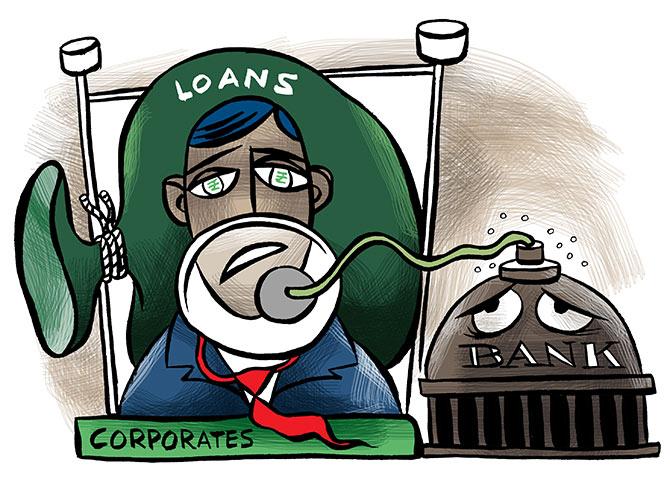According to ICRA, even in a high-growth scenario, wherein the second half of FY20 sees the incremental bank credit rise to Rs 6.5-7 trn, there will still be a 40-45% year-on-year decline.

With the Indian economy caught in a slowdown, bank credit is expected to expand at a muted 6.5-7 per cent in 2019-20 (FY20) from 13.3 per cent in FY19, rating agency ICRA said in a report.
This will be the lowest in 58 years, mainly on account of lower working capital requirements by companies and risk aversion among lenders.
According to ICRA, even in a high-growth scenario, wherein the second half of FY20 sees the incremental bank credit rise to Rs 6.5-7 trillion, there will still be a 40-45 per cent year-on-year (YoY) decline.
As of December 6, 2019, incremental bank credit increased by Rs 80,000 crore, whereas banks disbursed Rs 5.4 trillion during the same period in FY 19 and Rs 1.7 trillion in FY18 (till December 2017).
Bankers said that with private investment practically coming to a halt, there was little demand for corporate credit.
While activity may show an uptick in the second half, it will hardly compensate for the extended slowdown seen since the beginning of the year.
Companies are battling stress and are deleveraging wherever possible.
The retail segment is showing steady growth, but it is not in a position to make up for the slump in the industry segment.
According to ICRA’s assessment of 37 scheduled commercial banks, the YoY credit growth was 7.9 per cent as of September 2019.
While credit growth in public sector banks was merely 4.4 per cent, private banks registered 15 per cent growth in the same period.
Dinesh Khara, managing director, State Bank of India, said, “The private sector investment and consumption has been impacted in the context of slow economic growth. This led to deceleration in credit growth in the current financial year.
"However, things are expected to change for better in the second quarter (July-September 2020) of the next financial year (FY21).”
In FY19, incremental bank credit was close to Rs 12 trillion, while it was Rs 6.5 trillion in FY18.
The huge growth seen in FY19 can be attributed partly to the shift of large borrowers such as non-banking financial companies (NBFCs) and housing finance companies (HFCs) to the banking system.
They approached banks for funding requirements as other avenues of getting funds dried up for them because of the liquidity crisis after the IL&FS debacle.
V G Kannan, chief executive, Indian Banks’ Association (IBA), said, “Many companies have reduced output, in response to the demand slump in the economy.
"As a consequence, there is less usage of working capital limits.
Also, those with cash on books have preferred to repay old credit.”
They would prefer to operate with lower outstanding (debt) in current environment (marked by subdued demand) and later review the position on change in the demand pattern, he added.
“Within services, the credit outstanding to NBFCs has increased. However, the decline in trade credit and other services (which also includes HFCs) has resulted in the overall contraction in credit outstanding to the services segment in 7M FY2020.
"A sizeable portion of growth in retail credit is also driven by the purchase of retail loan portfolios of NBFCs and HFCs by banks,” ICRA said.
While credit taps may be running dry, the flow of money into banks kitty continued to show steady growth.
The incremental deposit accretion was Rs 5.3 trillion as of December 6, 2019 compared to Rs 4.6 trillion in the same period of FY19.
The overall deposit base increased to Rs 131.1 trillion as of December 6, 2019, a Y-o-Y growth rate of 10.3 per cent, the rating agency said.
The positive growth in deposit accretion has been attributed to the muted increase in currency in circulation, lower increase in asset under management of debt mutual funds as well as higher liquidity maintained by various corporate entities.












 © 2025
© 2025